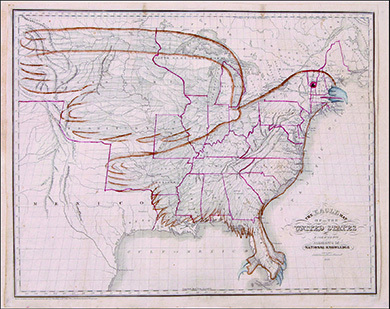| << Chapter < Page | Chapter >> Page > |
As the incursions of the earlier filibusters into Texas demonstrated, American expansionists had desired this area of Spain’s empire in America for many years. After the 1819 Adams-Onís treaty established the boundary between Mexico and the United States, more American expansionists began to move into the northern portion of Mexico’s province of Coahuila y Texas. Following Mexico’s independence from Spain in 1821, American settlers immigrated to Texas in even larger numbers, intent on taking the land from the new and vulnerable Mexican nation in order to create a new American slave state.
After the 1819 Adams-Onís Treaty defined the U.S.-Mexico boundary, Spain began actively encouraging Americans to settle their northern province. Texas was sparsely settled, and the few Mexican farmers and ranchers who lived there were under constant threat of attack by hostile Indian tribes, especially the Comanche , who supplemented their hunting with raids in pursuit of horses and cattle.
To increase the non-Indian population in Texas and provide a buffer zone between its hostile tribes and the rest of Mexico, Spain began to recruit empresarios . An empresario was someone who brought settlers to the region in exchange for generous grants of land. Moses Austin, a once-prosperous entrepreneur reduced to poverty by the Panic of 1819 , requested permission to settle three hundred English-speaking American residents in Texas. Spain agreed on the condition that the resettled people convert to Roman Catholicism.
On his deathbed in 1821, Austin asked his son Stephen to carry out his plans, and Mexico, which had won independence from Spain the same year, allowed Stephen to take control of his father’s grant. Like Spain, Mexico also wished to encourage settlement in the state of Coahuila y Texas and passed colonization laws to encourage immigration. Thousands of Americans, primarily from slave states, flocked to Texas and quickly came to outnumber the Tejanos , the Mexican residents of the region. The soil and climate offered good opportunities to expand slavery and the cotton kingdom. Land was plentiful and offered at generous terms. Unlike the U.S. government, Mexico allowed buyers to pay for their land in installments and did not require a minimum purchase. Furthermore, to many whites, it seemed not only their God-given right but also their patriotic duty to populate the lands beyond the Mississippi River, bringing with them American slavery, culture, laws, and political traditions ( [link] ).


Notification Switch
Would you like to follow the 'U.s. history' conversation and receive update notifications?